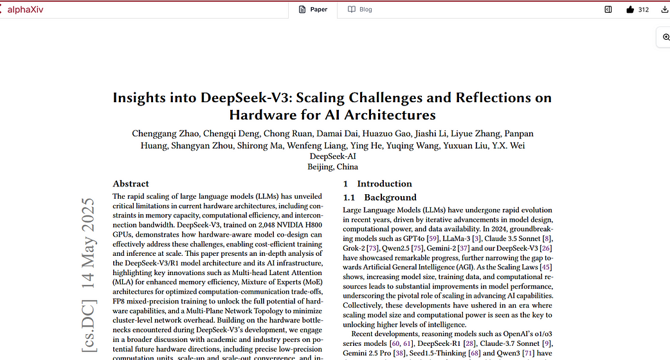Medium
14h
156

Image Credit: Medium
Reading this paper from DeepSeek made me rethink everything I knew about AI efficiency
- A technical paper on DeepSeek-V3 sheds light on AI efficiency, scaling challenges, and hardware reflections.
- The DeepSeek team trained a large model with 671B parameters using 2,048 NVIDIA H800 GPUs by optimizing hardware usage.
- They addressed memory limitations in scaling LLMs by employing Multi-head Latent Attention (MLA) to reduce memory usage per token.
- DeepSeek-V3 showcased the practicality of Mixture-of-Experts (MoE) architectures, demonstrating efficiency in using sparse MoE layout.
- The paper explores the use of FP8 floating points for training, highlighting trade-offs in precision and memory efficiency.
- FP8 compression into 8 bits reduces memory usage but can lead to instability in high-precision operations and data loss if not handled properly.
- DeepSeek's approach of using FP8 strategically with quantization techniques minimizes memory and bandwidth while maintaining accuracy.
- Their redesign of network topology improved efficiency, reducing network costs, maintaining low latencies, and scaling effectively.
- The paper emphasizes the importance of co-design in creating efficient AI models by challenging defaults and optimizing hardware usage.
- Understanding how deep learning works at scale in real-world hardware-constrained scenarios is crucial for AI and infrastructure development.
- The paper encourages readers to rethink AI system design by focusing on efficiency and optimization over sheer scale and GPU numbers.
Read Full Article
9 Likes
For uninterrupted reading, download the app